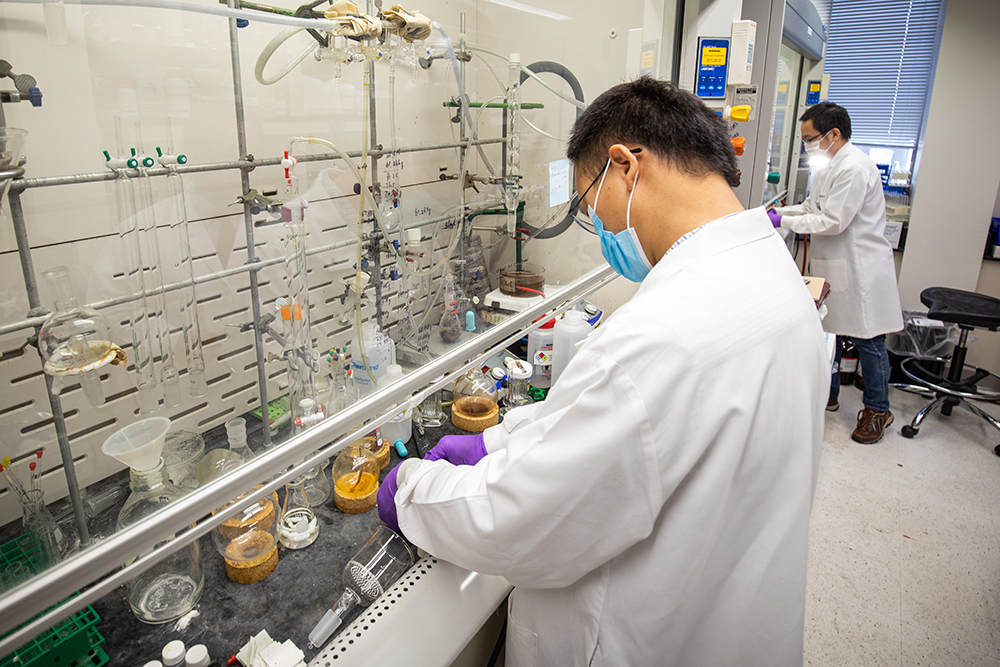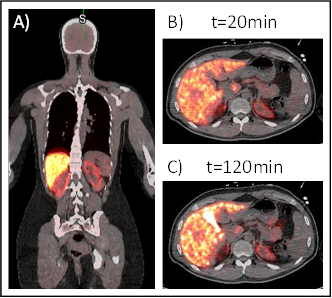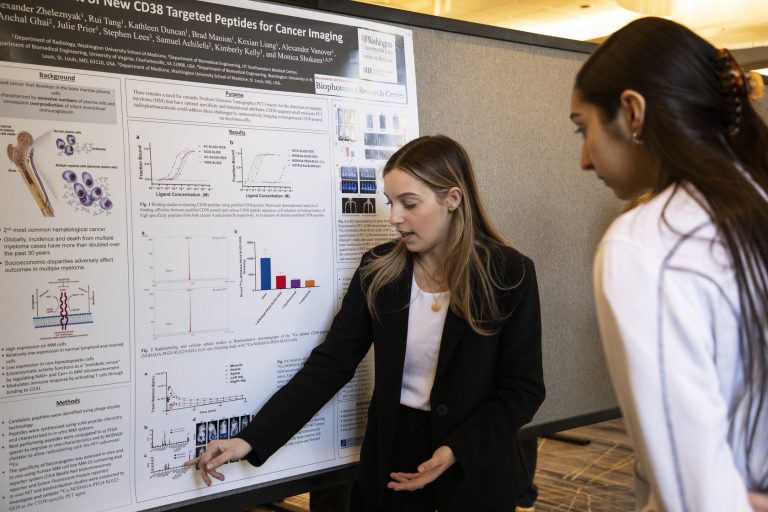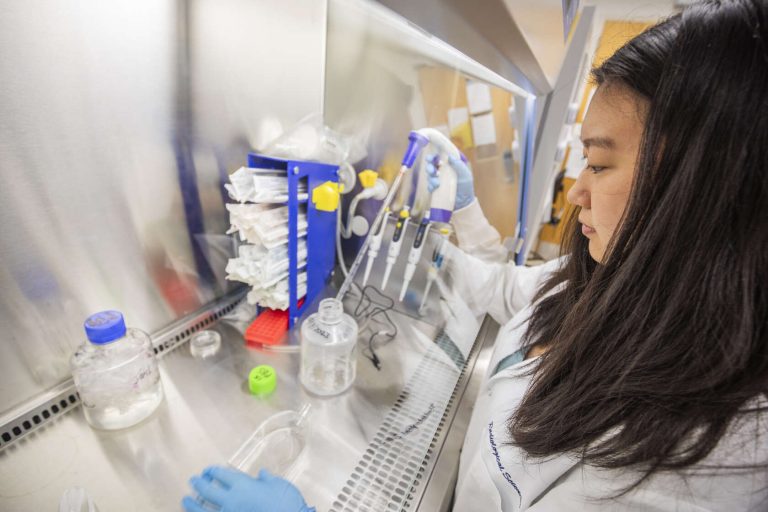Tu Lab
Projects
PET Imaging of S1P1 Expression for Inflammatory Response in Neurological Disease
Goal
The goal of this project is to develop positron emission tomography (PET) tracers to quantitatively measure the expression of the sphingosine-1-phosphate receptor 1 (S1P1) for inflammatory response to multiple sclerosis and other inflammatory diseases.

Our People
The lab, led by Zhude Tu, PhD, is comprised of chemists with expertise in medicinal chemistry and radiosynthesis, and biologists who carry out the validation of candidate tracers for positron emission tomography (PET) imaging.




